calvini
TPF Noob!
- Joined
- Jan 2, 2008
- Messages
- 10
- Reaction score
- 0
- Can others edit my Photos
- Photos OK to edit
Hi all,
I'm new to this awesome forum and am proud to say that I've been reading this forum for quite some time now and have been taking in advices and all.
Been out and about yesterday and took about 300 + photos.
Some of my questions that I would appreciate the help with is as follows:
Some of the gear that I used:
Canon 430EX Speedlite ( intended for fill flash ) under eTTL and high speed sync mode
Canon 400D
Tamron 28-75 2.8 ( shooting basically at f4 and f8)
Evaluative Metering mode
1) The day was sunny at the gardens with the exception of shades under trees. I noticed when I metered for the subject (people), the sky gets blown out (white in colour).. Any tips on how to remedy this situation and what sort of metering/ exposure I should get?
2) As the lens AF mode was crappy, focusing on most odd parts or just continually hunts, I set the AF point to center and just focused on subject and recompose; which brings me to my next question;
With a subject of 2 people in the frame, do I just point the center point to focus in on the eyes and then recompose?
If the picture was to be quite a distant shot (not full body shots that fill the entire frame) the eyes remain relatively small, do I just point the focus point to the eyes or zoom in on the eyes and zoom out and recompose?
3) I was shooting on burst mode and noticed that alot of the pictures turn out to be quite soft; 1 keeper in every 5, and was walking alot with subject moving and not posing (basically like a paparazzi shooting).
Is this a problem with the lens being soft; or issit my focusing with only the center point on the subject with burst mode or ?
Any hints would be greatly appreciated! =) Thanks!
I'm new to this awesome forum and am proud to say that I've been reading this forum for quite some time now and have been taking in advices and all.
Been out and about yesterday and took about 300 + photos.
Some of my questions that I would appreciate the help with is as follows:
Some of the gear that I used:
Canon 430EX Speedlite ( intended for fill flash ) under eTTL and high speed sync mode
Canon 400D
Tamron 28-75 2.8 ( shooting basically at f4 and f8)
Evaluative Metering mode
1) The day was sunny at the gardens with the exception of shades under trees. I noticed when I metered for the subject (people), the sky gets blown out (white in colour).. Any tips on how to remedy this situation and what sort of metering/ exposure I should get?
2) As the lens AF mode was crappy, focusing on most odd parts or just continually hunts, I set the AF point to center and just focused on subject and recompose; which brings me to my next question;
With a subject of 2 people in the frame, do I just point the center point to focus in on the eyes and then recompose?
If the picture was to be quite a distant shot (not full body shots that fill the entire frame) the eyes remain relatively small, do I just point the focus point to the eyes or zoom in on the eyes and zoom out and recompose?
3) I was shooting on burst mode and noticed that alot of the pictures turn out to be quite soft; 1 keeper in every 5, and was walking alot with subject moving and not posing (basically like a paparazzi shooting).
Is this a problem with the lens being soft; or issit my focusing with only the center point on the subject with burst mode or ?
Any hints would be greatly appreciated! =) Thanks!


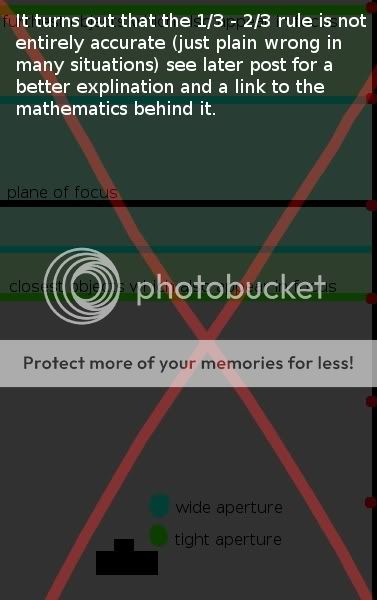
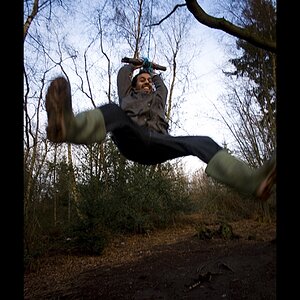

![[No title]](/data/xfmg/thumbnail/37/37624-7f9c9a5c8c7bcb5e62f67313e2e48dbc.jpg?1619738153)

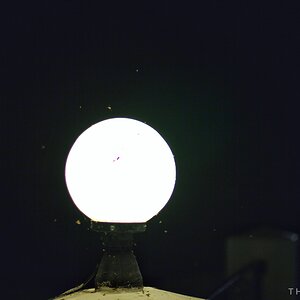

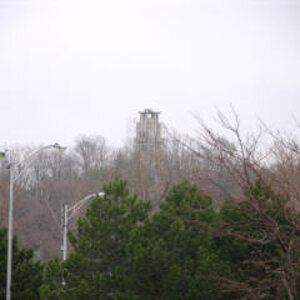
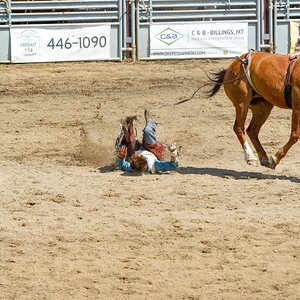


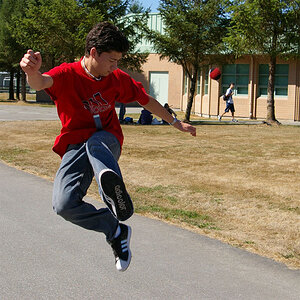
![[No title]](/data/xfmg/thumbnail/37/37625-7e132688457d56e50320a8c99a79fe38.jpg?1619738154)